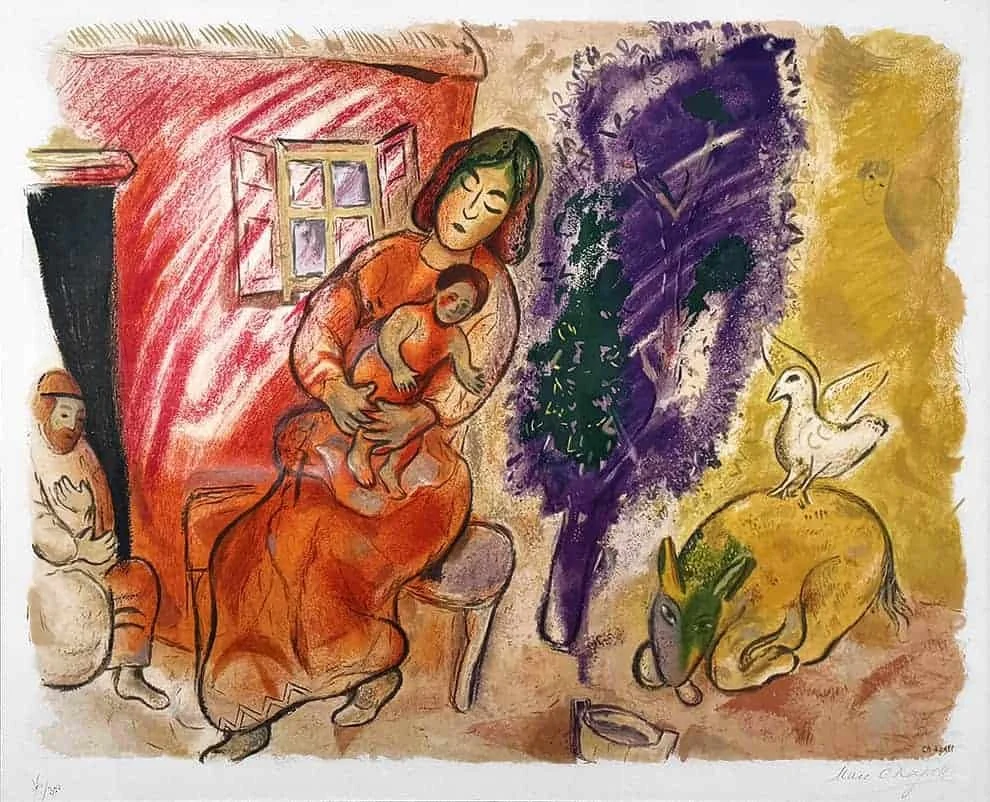The Art of Motherhood: Seeing the Sacredness of Motherhood in Art: Maternity by Marc Chagall
Oh this painting might have my heart.
Chagall's painting invites us to step into the colorful world of the mother-child bond. It reflects the divine love that sustains and nurtures life, encouraging us to recognize the holiness in our relationships and to cherish the gift of life.
Marc Chagall (1887-1985) was a Russian-French artist of Belarusian Jewish origin. He was best known for his unique style that blended elements of Cubism, Symbolism, and Fauvism. Born in Vitebsk, Belarus, Chagall's early life in a Jewish community deeply influenced his work. He often paints themes of love, faith, and folklore. In 1910 he moved to Paris where he became associated with avant-garde artists and developed his distinctive style characterized by dreamlike imagery and vibrant colors.
Throughout his career, Chagall's art reflected his personal experiences and spiritual beliefs. His works often depicted scenes from the Bible, Jewish traditions, and his own life, blending reality with fantasy in his paintings. Chagall's ability to convey deep emotion through color and form made him one of the most beloved artists of the 20th century.
In "Maternity," Chagall presents a tender scene of a mother and child, enveloped in a dreamlike embrace. The figures float against a backdrop of vibrant colors and symbolic elements, creating a sense of otherworldly serenity. The mother's face radiates love and devotion, while the child appears peaceful and trusting.
Reflections:
How does Chagall's use of color and form enhance the emotional impact of the painting?
What symbolic elements in the artwork stand out to you, and what might they represent?
How can you cultivate a sense of security in your relationship with your child?

